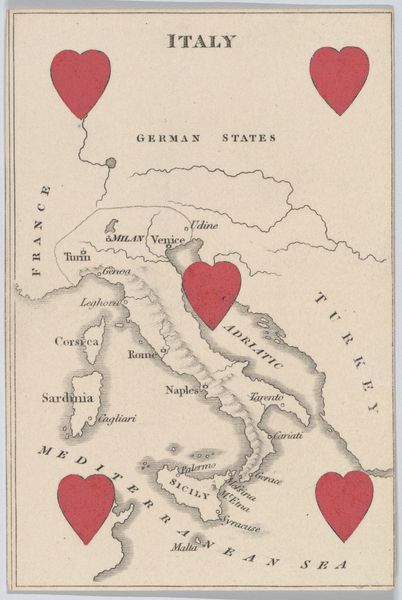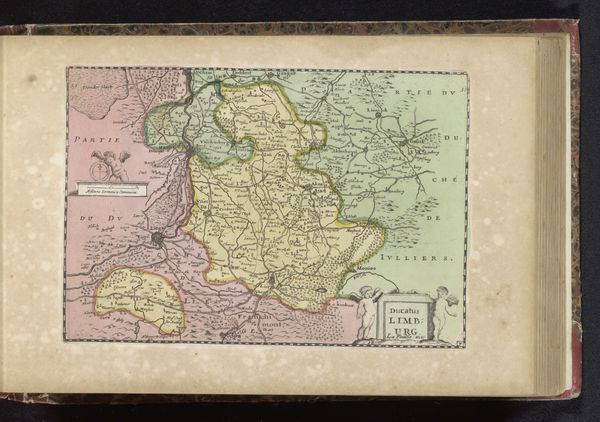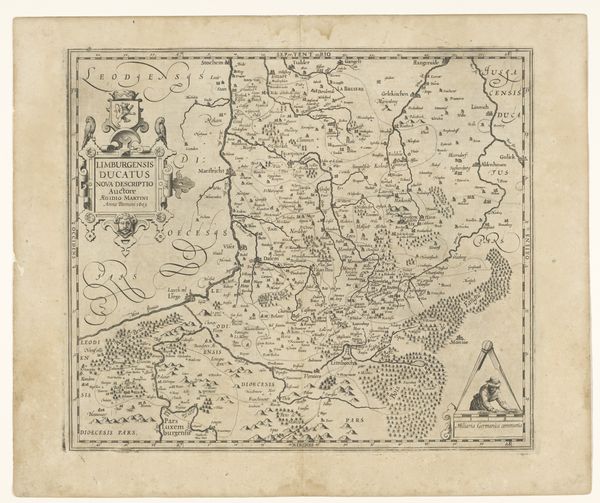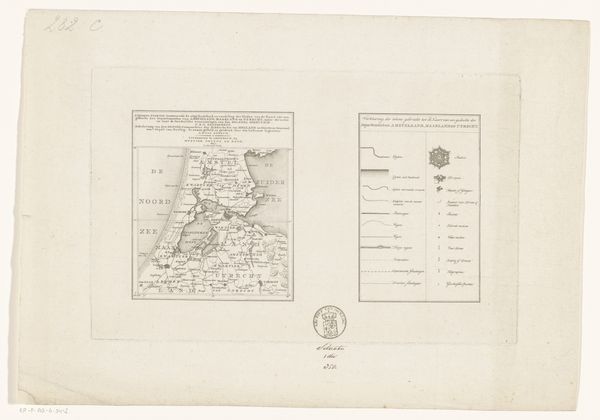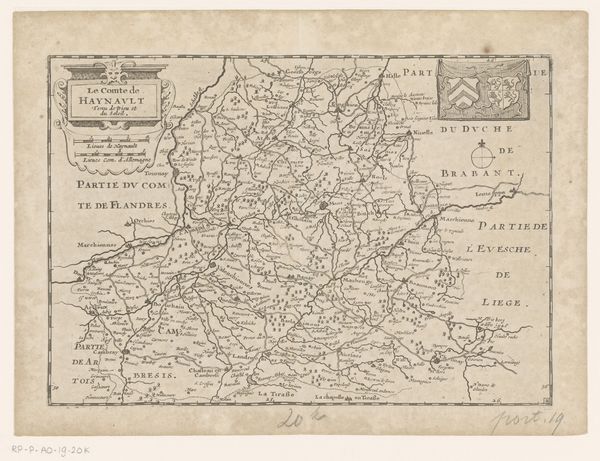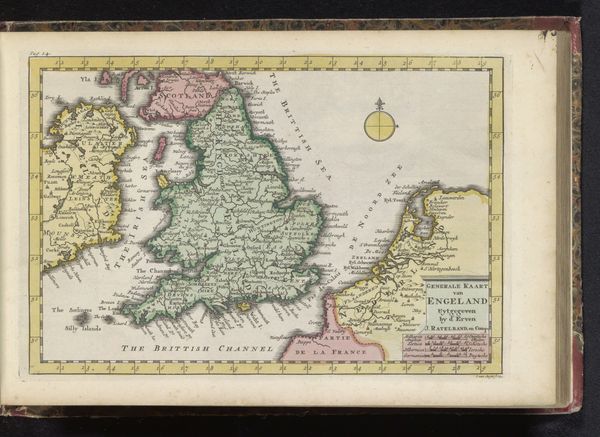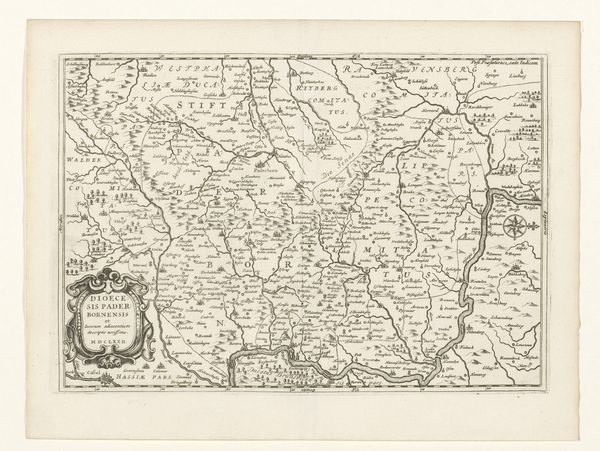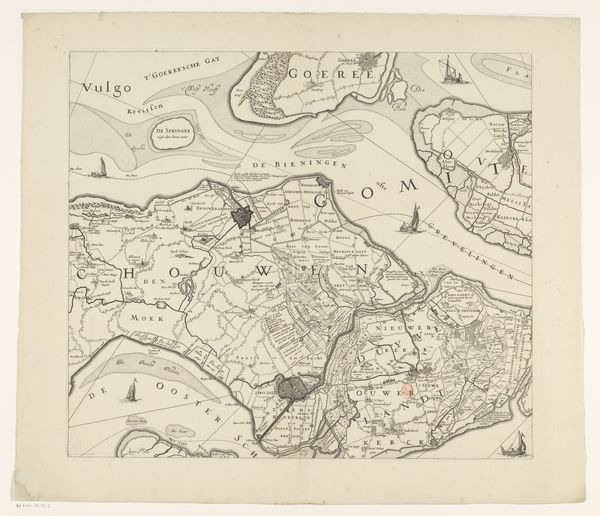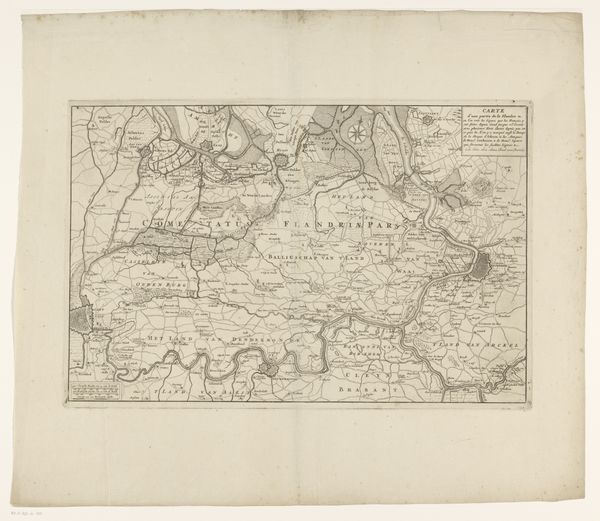
British Isles, from "Court Game of Geography" 1838 - 1855
drawing, print, paper, ink, engraving
drawing
paper
ink
geometric
genre-painting
engraving
Dimensions: 3 3/4 × 2 1/2 in. (9.5 × 6.4 cm)
Copyright: Public Domain
Curator: This peculiar cartographic print, "British Isles, from 'Court Game of Geography'," comes to us from the collaboration of William and Henry Rock, sometime between 1838 and 1855. Crafted with ink on paper using engraving techniques, it presents a game-like interpretation of the British Isles. Editor: My immediate reaction is one of playful ambiguity. It's both informative and strangely emotive with those large red hearts surrounding the islands. The palette is so minimal and subdued except for the strategic placement of these hearts. Are we meant to feel patriotic fervor, or is there a more subtle commentary at play? Curator: Given the era, a fervent patriotism certainly wasn't out of place. But the application of cartography to game design implies an intriguing power dynamic at play, too. Whose perspective is favored and what ideologies shape this geography? Editor: I'm fascinated by the material choices. The precise lines of the engraving allow for incredible detail in rendering the geography. The print medium itself speaks to accessibility and mass production. But who exactly was producing and consuming such images and for what purposes beyond just learning? Was this used in educational institutions to shape the ideologies and subjectivities of youth in any way? Curator: These court games of geography became quite popular as tools for pedagogical and recreational pursuits during this period. But you also have to consider the wider political and social implications of creating these kinds of images and using them for educational activities for example, how notions of British identity might have been carefully crafted in this kind of genre work. Editor: Right. It's not just a game but a representation imbued with values, reflecting and reinforcing ideas about national pride, territorial ownership, and perhaps even colonial aspirations. I also notice the prominent placement of key cities: London, Edinburgh, Dublin and the attention paid to channels as if access and control were paramount. This emphasizes control over place through production and circulation. Curator: Exactly. Through their materials and manufacture, these were powerful visual tools for shaping national and gendered imaginaries, constructing specific narratives around British history and its place in the world at a crucial time of imperial expansion. Editor: It really makes you reconsider something as seemingly innocuous as a child's game and its lasting impact in establishing and perpetuating national sentiment. I like how our analysis really made that evident through discussions of labor, material and context! Curator: Agreed, reflecting upon how historical prints informed popular knowledge and shaped ideological landscapes—is deeply relevant today, as our understanding of nationhood is contested and in need of careful reimagining.
Comments
No comments
Be the first to comment and join the conversation on the ultimate creative platform.
